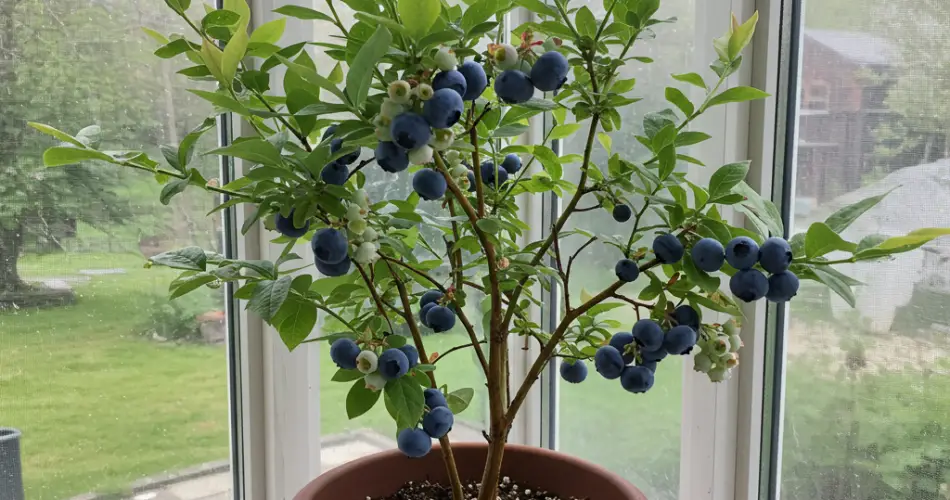You don’t need a sprawling backyard or countryside garden to grow juicy, sweet blueberries. With the right setup, a bit of patience, and some smart care, you can grow blueberries right inside your home—and yes, even make your neighbors a little envious. Here’s how to cultivate your own indoor blueberry bush and enjoy a harvest of fresh, flavorful berries straight from your windowsill.
Why Grow Blueberries Indoors?
Growing blueberries indoors offers several advantages. First, you control the environment—temperature, humidity, light, and pests—so your plant can thrive year-round. Second, blueberry bushes are attractive, with their glossy green leaves and pretty blossoms, making them a charming addition to your home décor. And of course, the reward of fresh fruit without stepping outside is priceless.
Choose the Right Variety
Not all blueberry bushes are suitable for indoor growing. The key is to choose a dwarf or container-friendly variety. Look for:
-
Top Hat – A popular dwarf variety that grows only 1–2 feet tall and produces full-sized berries.
-
Northblue – Compact and cold-hardy, perfect for containers.
-
Sunshine Blue – A semi-dwarf, evergreen variety that performs well in containers and even tolerates lower-chill requirements, ideal for indoor settings.
Selecting the Right Container
Blueberries have shallow root systems but require plenty of space to spread horizontally. Choose a container at least 16–20 inches in diameter and equally deep, with good drainage holes. Avoid metal pots, which can overheat near windows. Opt for ceramic, plastic, or wooden planters that retain moisture but don’t get too hot.
To improve drainage, place a layer of small rocks or gravel at the bottom before adding soil.
The Ideal Soil
Blueberries require acidic soil, with a pH between 4.5 and 5.5. Regular potting soil is usually too alkaline. Use a potting mix designed for acid-loving plants (like azaleas or rhododendrons), or make your own blend using:
-
50% peat moss or coconut coir
-
30% perlite
-
20% composted pine bark or sand
It’s worth investing in a simple soil pH tester to ensure your mix stays in the right range.
Light and Temperature Requirements
Blueberries need a lot of light—ideally at least 6–8 hours of direct sunlight daily. A south-facing window is ideal. If you don’t get enough natural light, supplement with a full-spectrum grow light for best results.
As for temperature, blueberries prefer cool roots and moderate temperatures. Keep them in a room that stays between 60°F and 75°F (15°C to 24°C). Avoid placing them near radiators or heat vents.
Watering Tips
Blueberries like consistent moisture but do not tolerate soggy soil. Water thoroughly when the top inch of soil feels dry to the touch. Allow excess water to drain completely to avoid root rot.
Use rainwater or distilled water when possible. Tap water, especially hard water, can alter the soil’s pH over time and damage the plant.
Fertilizing Indoors
Feed your blueberry plant with a balanced fertilizer designed for acid-loving plants, about once a month during the growing season (spring and summer). Avoid over-fertilizing—it’s better to underfeed than risk burning the roots.
Pollination and Fruit Production
Most blueberry varieties are self-pollinating, but having two different cultivars can boost fruit production. Indoors, hand-pollination improves your chances of a good yield. Use a small brush or cotton swab to transfer pollen between flowers when they bloom.
Blueberries usually start producing fruit in the second or third year, but some compact varieties may bear fruit earlier. Patience is key.
Winter Dormancy
Even indoors, blueberries benefit from a period of dormancy. During winter, reduce watering and keep the plant in a cooler area (around 40°F–50°F or 4°C–10°C) for a few weeks to simulate the natural cycle. This helps encourage strong growth and fruiting in the next season.
Pruning and Maintenance
Prune in late winter to early spring to remove dead or weak branches and shape the plant. Pruning encourages bushier growth and better airflow, which helps prevent disease.
Keep an eye out for pests like aphids or spider mites. Neem oil or insecticidal soap works well for indoor pest control.
Final Touches
To make your indoor blueberry setup even more impressive, choose a decorative pot, mulch the soil with pine needles or bark, and arrange it near other indoor edibles like herbs or strawberries. With proper care, your plant will not only reward you with delicious fruit but also become a beautiful conversation piece.
By following these steps, you’ll be on your way to growing blueberries that look and taste amazing—all without stepping outside. Your guests will marvel at your indoor garden, and your neighbors might just start asking for cuttings.



